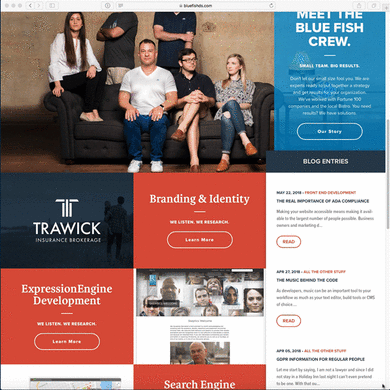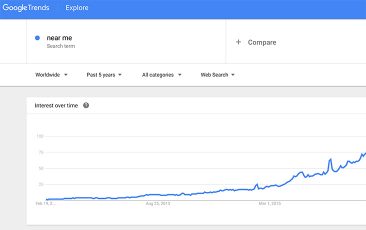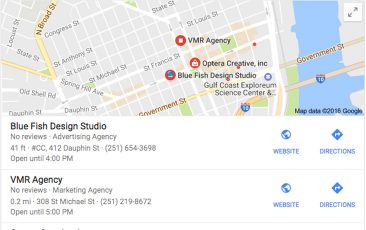

Search Engine Optimization is a confusing subject for those that are not in the industry… Actually, it is a confusing subject for everyone outside of the writers of the Google Algorithm. But I am going to try and lend some clarity to the subject today by talking to you about on-site SEO vs off-site SEO. This may get a bit long so grab a cup of coffee and a donut or something and we’ll dive in.
Let’s break down off-site SEO
I am going to start with off-site SEO as I think this one is a bit easier to explain. Offsite SEO is exactly what it sounds like. It is everything that you do to help with your ranking that does not include your website. This would include building backlinks. Backlinks are used by Search engines to tell whether a site is an authority on a topic. The assumption is that a site that is being linked to has a higher authority on the subject than a site that has fewer or no links.
It is important to note that there are a few different types of links. But, you can no longer just hire a firm to build what used to be known as a link farm. Link farms are frowned upon to the point that if Google thinks you are gaming the system they will blacklist your domain.
The best types of links are those given in context of an article as a reference. So if you are writing an article your favorite restaurants in Mobile, and link to the restaurants, then you are helping those restaurants with their off-site SEO. Another type of link are those you create yourself. This would include links from directories, forums, social media posts from your company account, etc. Other factors that weigh into the “worth” of a link are the popularity of the linking site and the topic of the article. So a link from that same article on restaurants in Mobile that you love to a car repair shop in Topeka would render the whole exercise null.
5 on-site SEO tactics
Just as off-site SEO is everything but the website, on-site SEO is everything you can do to a website. And of all of the tactics, this is the one that we see most people neglect. We certainly can’t cover all of the various aspects of on-site but we’ll give you 6 good things to think about

Title Tags
One of the easiest things you can do to help your SEO is provide good, descriptive Title Tags. For those of you that are not familiar with a Title Tag, you can find them by hovering your cursor over the tab in your browser.
Most content management systems have a way of managing these. To the effect that you can customize these to the content the better. Make sure to include keywords that you are trying to rank for.
Content Strategy
Content matters in more ways than one. The amount of keywords that you have on a page of unique content is important. The number of pages you have on that topic also matters. This is why we often tell our clients to have a blog, article, or news section on a site. We ask them to commit to writing a piece of content once or more a month (or to have us write it for them). This builds the keyword density of the overall site. It also creates additional pages that have unique title tags.

Responsive Websites
It used to be ok to have a website that was only viewable on desktop computers (laptops included). It is extremely important to have a responsive website now (see above animation for example). If you are not familiar with the term Responsive when it comes to websites, this is the term given to websites that change layout from desktop to mobile devices. So if you grab the right hand side of your browser and make the window smaller my moving your cursor to the left, you should see this site reorient itself for the size of the viewport. Google has told us that they use this as a ranking factor for websites. It has also become a lot easier for you to get a responsive website. So if you do not currently have a responsive website, you need to get one.
Page Speed
If you have not tested the speed of your website then do so now. Just click here and enter in your URL and click Analyze. Google will give you a score. Ideally you are above a 70. This is not easy. Making the adjustments necessary certainly require someone knowledgable in the inner workings of a website. If you run a test, send me a link to your score. I’d love to see how you fare.
SSL
This one is a pretty easy one. It used to be that you could exist on the web without an SSL (Secure Sockets Layer) Certificate. Those days are gone. We ask all of our clients to get one. For the clients that we host, we provide one for them. This tells people that all of the connections to the site are secure. If you opt for some of the more robust certificates it also tells people that you have been vetted and are who you say you are. That level of certificate is important for anyone who is selling products on their site.
Wrapping it all in a nice pretty SEO bow
As you can see, Google wants to see websites that have been optimized to the nth degree. They know that a majority of users are now navigating the web on mobile devices over networks that are not exactly the fastest. Ensuring that users have a fast and optimized experience means that they are more likely to find what they are looking for. And Google’s primary business is making sure that happens. All of the effort you put into SEO will be rewarded with additional traffic from Google. It will also benefit you because more users will stick around and take a look at your site. There is nothing worse for a user that clicking on a search result only to be directed to a website that takes 30-40 seconds to load and is only optimized for a desktop monitor.
And, of course, if you need assistance with any of the above, Blue Fish is your team. Just send us an email and we’ll get the process started.


